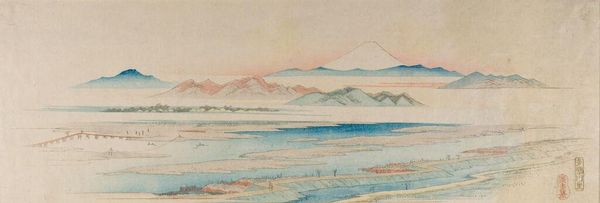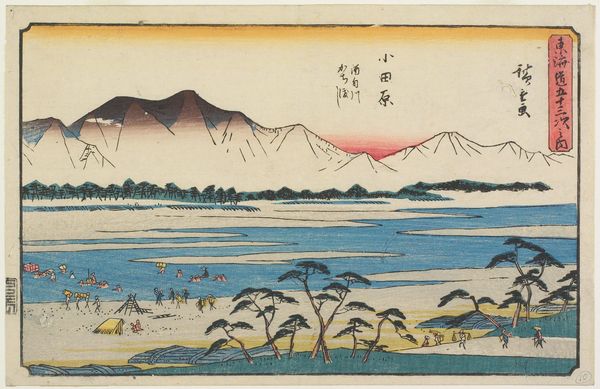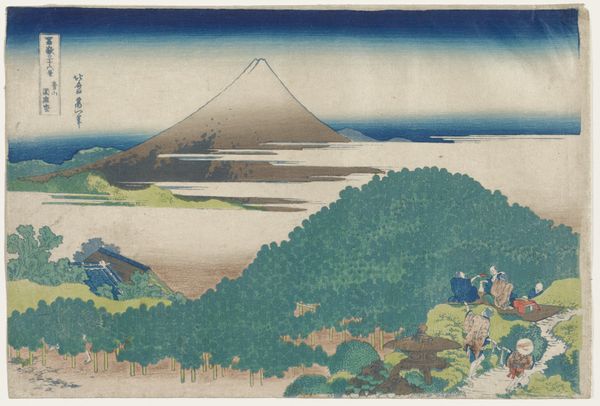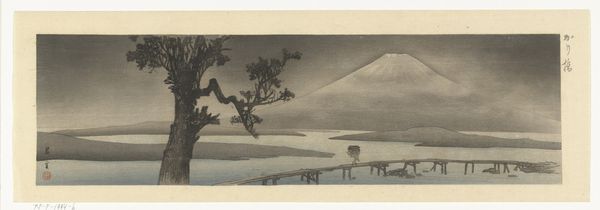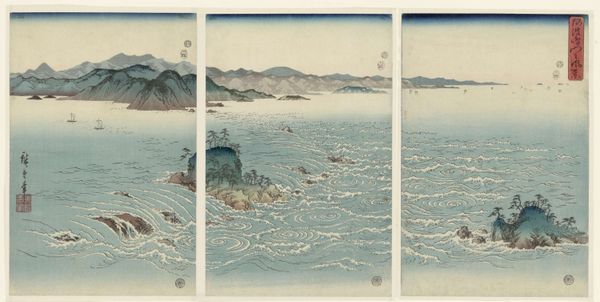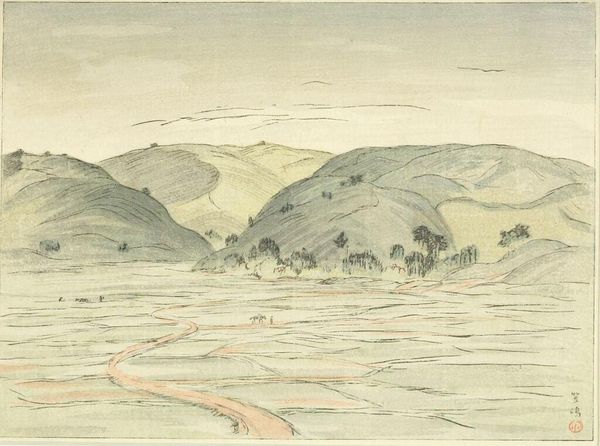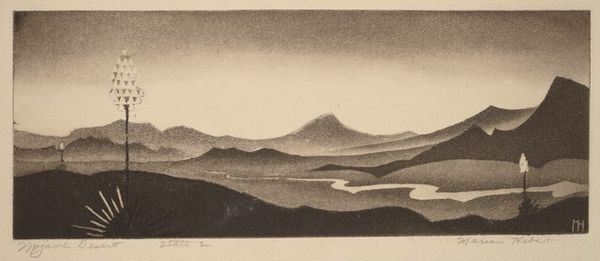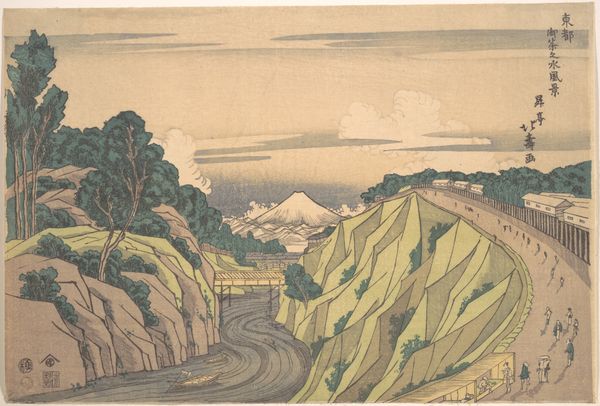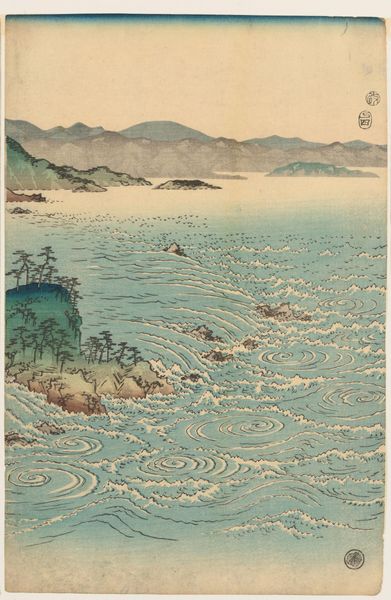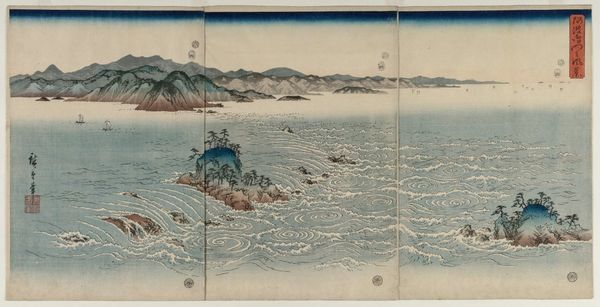
woodblock-print, print, ink, woodblock-print
#
woodblock-print
# print
#
asian-art
#
landscape
#
ink
#
woodblock-print
Dimensions: 7 13/16 × 11 11/16 in. (19.84 × 29.69 cm) (image)15 × 19 × 1 1/2 in. (38.1 × 48.26 × 3.81 cm) (outer frame)
Copyright: No Copyright - United States
Curator: Ito Shinsui's "Hira," created in 1917, is a compelling example of Japanese woodblock printing, currently housed at the Minneapolis Institute of Art. Editor: There’s a melancholy beauty to this print. The somber tones, particularly in the sky, lend the landscape a sense of quiet drama. Curator: It’s the nuanced layering of the woodblocks that really draws my eye. Notice the grain of the wood itself is visible; I wonder if that was intentional or due to production constraints? It gives the artwork a distinctive materiality, and provides subtle texture. The choice of ink impacts the color palette; its a deliberate strategy. Editor: Indeed, the composition’s power rests in the tension between the vast landscape and the fragile reeds in the foreground. It feels deeply rooted in Japanese aesthetic traditions which recognize the temporality of life. It also prompts questions about our relationship with nature – a theme often overlooked by contemporary society given its environmental implications. Curator: The process really dictated the outcome. Ukiyo-e prints like this were a commodity. Think of the skilled labor that went into carving each block for each color. It makes you appreciate the role of anonymous craftspeople within the art world, especially from the West. The prints were commercial objects. Editor: Thinking about labor, one must ask if the art, despite its beauty, further embedded hierarchies that disempowered many whose craftsmanship remained unacknowledged? To reflect upon the gendered associations between female labor with handicraft, especially. What impact did the commerciality of these prints had on women? Curator: Considering "Hira," my emphasis shifts to understanding print as part of an object economy during the 1920's in Japan. It shifts beyond thinking it in solely the artist. But it provides unique entrypoints to reflect upon economic and political powers at that time. Editor: And reflecting, these works prompt questions related to ecological devastation and the impact these forces leave on cultural objects to contemporary identities. The woodcut medium also provides opportunities for conversations about women involved with cultural change throughout that time. Curator: This print isn't merely a pretty landscape but speaks volumes about artistic production, commodification, labor divisions. Editor: And it’s about linking our art-historical inquiries with contemporary concerns around ecological justice, representation, labor exploitation, race and cultural identity, to foster nuanced interdisciplinary perspectives.
Comments
No comments
Be the first to comment and join the conversation on the ultimate creative platform.
